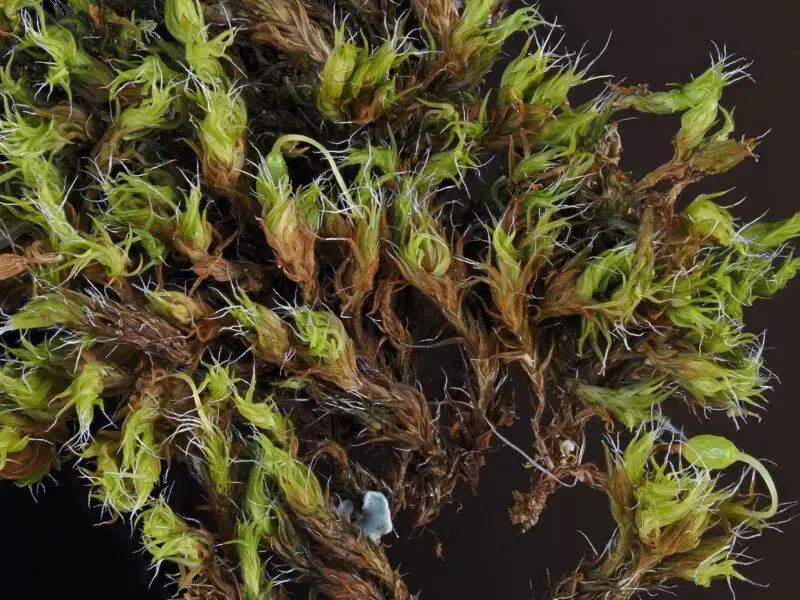
13636580214_a2188947dd_b.jpg from: https://www.flickr.com/photos/loarie/13636580214
Grimmia trichophylla var. meridionalis: The Mighty Moss of the Mediterranean
Introduction
When it comes to the fascinating world of bryophytes, there’s one little moss that stands out from the crowd: Grimmia trichophylla var. meridionalis Müll.Hal. This unassuming plant packs a big punch when it comes to its unique adaptations and important ecological roles. Let’s take a closer look at this marvelous moss!
Background
Grimmia trichophylla var. meridionalis is a variety of the Grimmia trichophylla species. It belongs to the Grimmiaceae family in the Bryopsida class of mosses. The Grimmiaceae are known as the “dry rock mosses” since they commonly grow on exposed, dry boulders and cliffs.
Morphology and Identification
G. trichophylla var. meridionalis forms small, dense cushions on rock surfaces. The individual plants are only about 0.5-3 cm tall. The leaves are lanceolate (spear-shaped) and have hair-points

medium.jpeg from: https://www.inaturalist.org/taxa/163406-Grimmia-trichophylla
at the tips. The leaf margins are recurved.
The seta

hair-pointed-grimmia-grimmia-trichophylla-is-a-cushion-moss-this-photo-was-taken-in-arribes-del-duero-natural-park-zamora-province-2DF6XAF.jpg from: https://www.alamy.com/hair-pointed-grimmia-grimmia-trichophylla-is-a-cushion-moss-this-photo-was-taken-in-arribes-del-duero-natural-park-zamora-province-image388000327.html
(stalk bearing the capsule) is curved when moist. The capsules are ovoid and ribbed

193770.jpg from: https://inpn.mnhn.fr/espece/cd_nom/5561
when dry. Spores are released from the capsule through a peristome (ring of teeth).
Global Distribution and Habitat
Grimmia trichophylla var. meridionalis is found across southern Europe, northern Africa, and southwest Asia – essentially the Mediterranean region. It grows on siliceous rock outcrops and boulders in

fa301428.jpg from: https://www.naturbasen.dk/forum-arkiv/traad?id=301428
dry, exposed habitats from lowlands to mountains.
Ecological Roles and Adaptations
As a pioneer species, G. trichophylla var. meridionalis plays an important role in primary succession on bare rock surfaces. The dense cushions help to trap dust, organic matter, and moisture, paving the way for other plants to establish.
This mighty moss has several adaptations to survive harsh, dry conditions:
- Hair-points on leaf tips help to reflect excess light and absorb moisture from fog

2023-01-17-16-30-17-BR3S1-800×600.jpg from: https://www.britishbryologicalsociety.org.uk/learning/species-finder/grimmia-trichophylla/
- Recurved leaf margins reduce water loss
- Thick cell walls prevent desiccation
- Rhizoids anchor the plant to the rock surface
In Summary

Grimmia_trichophylla_014C.JPG from: https://cisfbr.org.uk/Bryo/Cornish_Bryophytes_Grimmia_trichophylla_sstr.html

120px-Grimmia_trichophylla_(d%2C_144207-481933)_7137.JPG from: https://commons.wikimedia.org/wiki/Grimmia_trichophylla
| Characteristic | Description |
|---|---|
| Taxonomy | Grimmiaceae family, Grimmia genus |
| Plant Size | Small cushions, 0.5-3 cm tall |
| Leaves | Lanceolate with hair-points, recurved margins |
| Capsule | Ovoid, ribbed when dry, curved seta |
| Habitat | Exposed siliceous rock, Mediterranean region |
| Adaptations | Prevent desiccation, absorb moisture, reflect light |
| Ecology | Pioneer species in primary succession |
Conclusion
Grimmia trichophylla var. meridionalis may be small, but it’s certainly significant. This marvelous Mediterranean moss is a true survivor, well-adapted to life on the rocks. Next time you’re hiking through the hills of southern Europe, take a moment to appreciate the mighty mosses at your feet!

grimmia-850×500.jpg from: https://www.earth.com/plants/grimmia-dry-rock-moss-grimmia/
What other secrets might these tiny plants be hiding? The wonderful world of bryophytes

moss_Grimmia_pulvinata_col_120220_0113c.jpg from: https://www.wansteadwildlife.org.uk/WILDLIFE/liverworts_and_mosses/moss_Grimmia_pulvinata.htm
still has many mysteries waiting to be uncovered by curious naturalists like you.